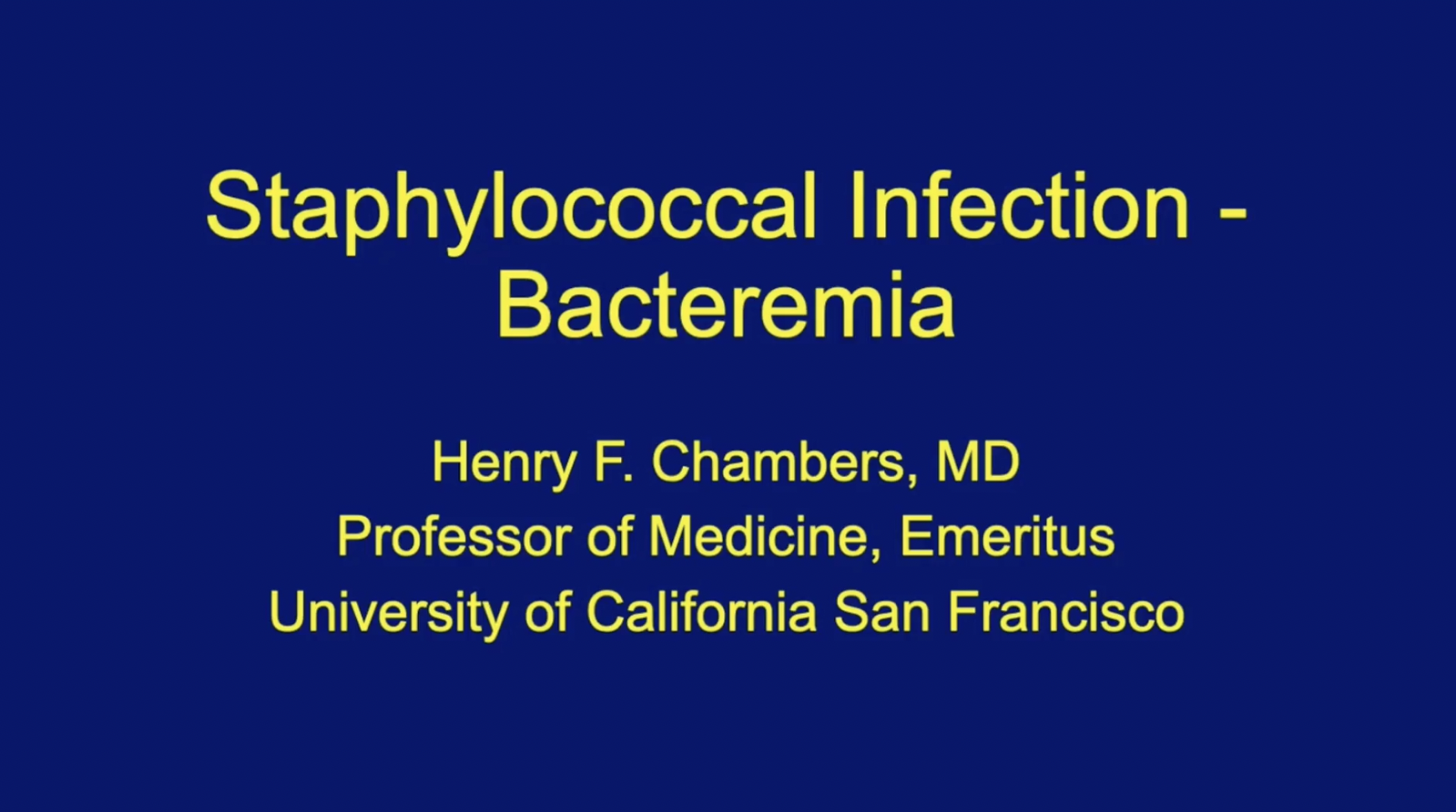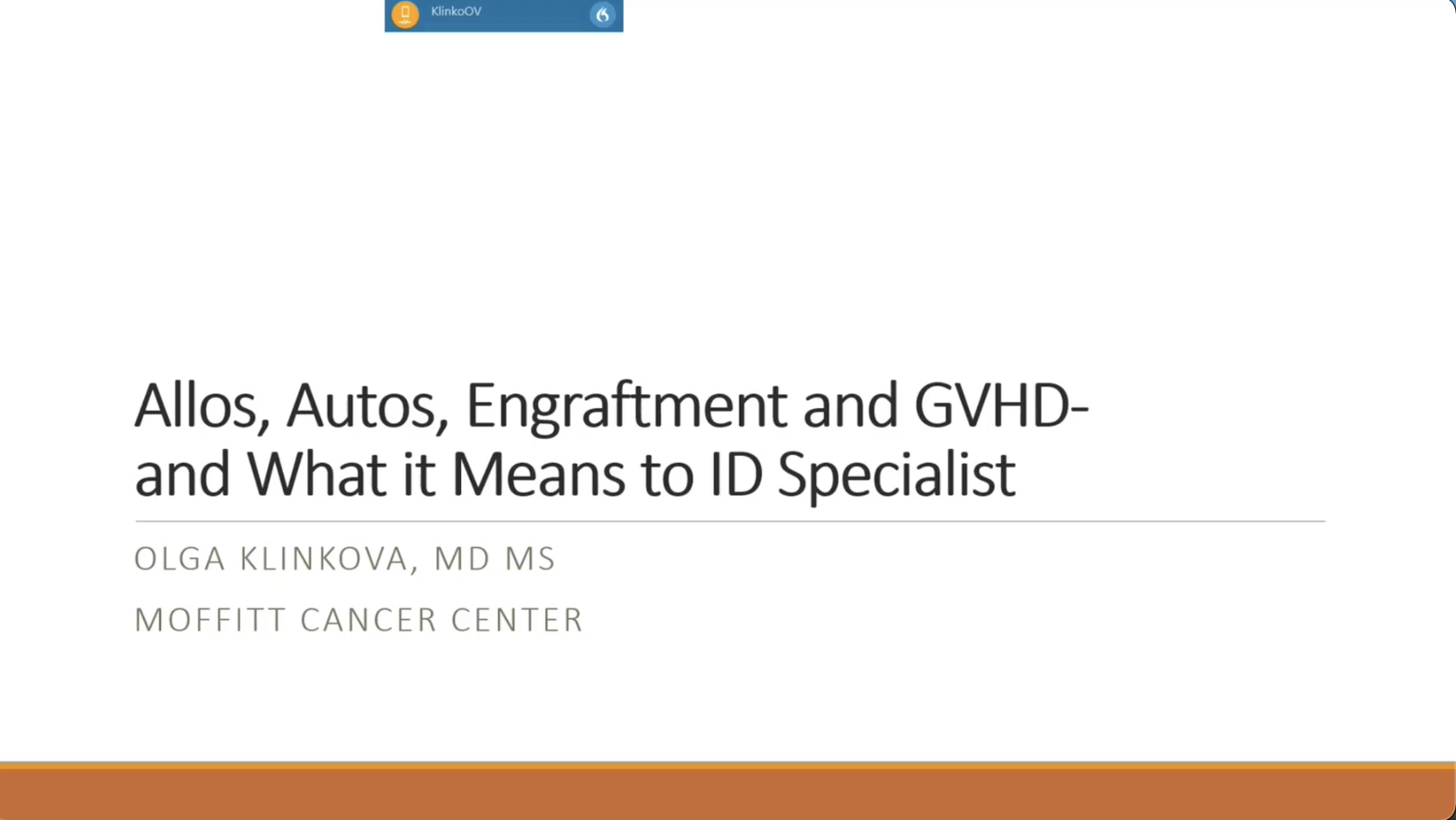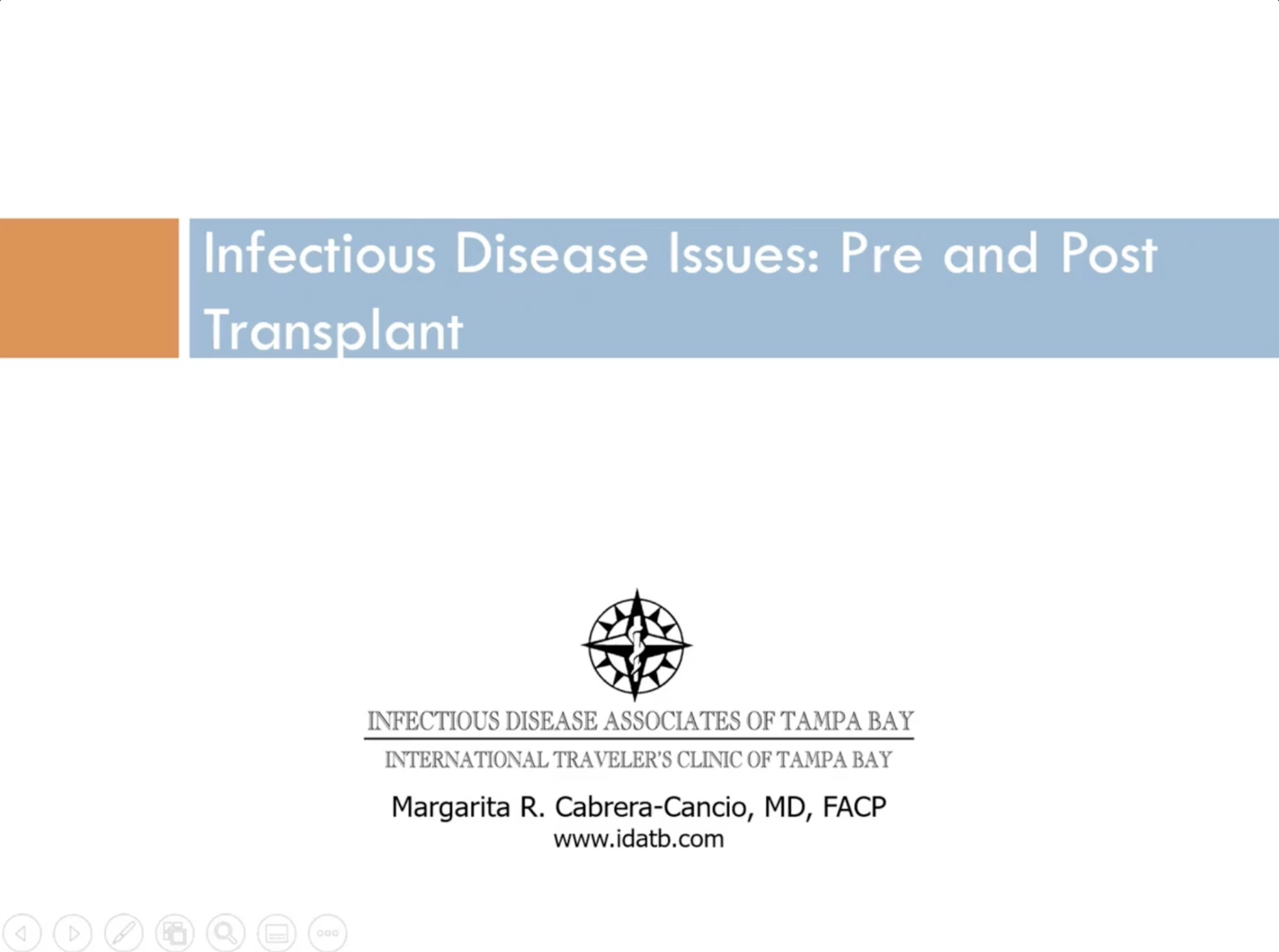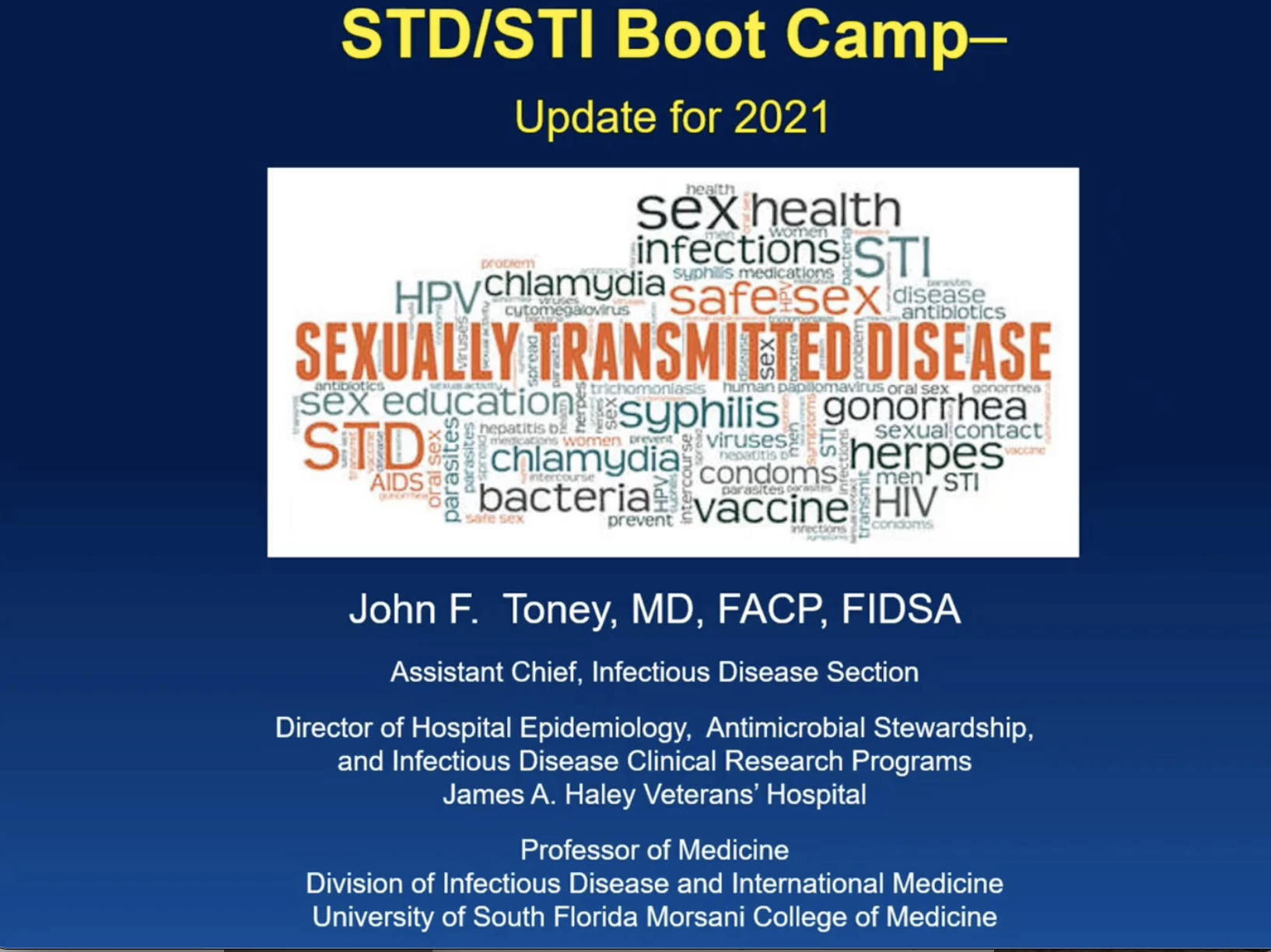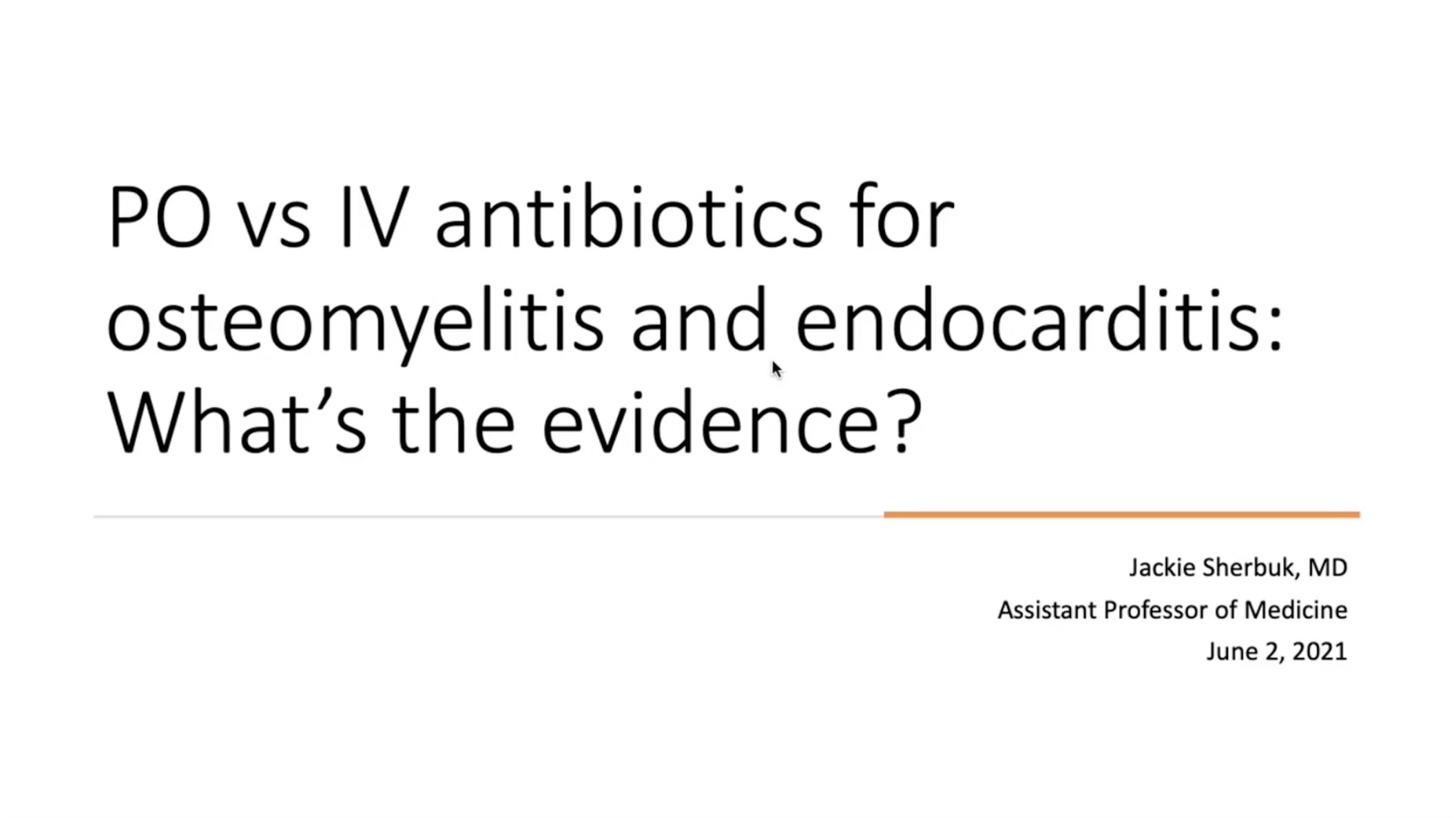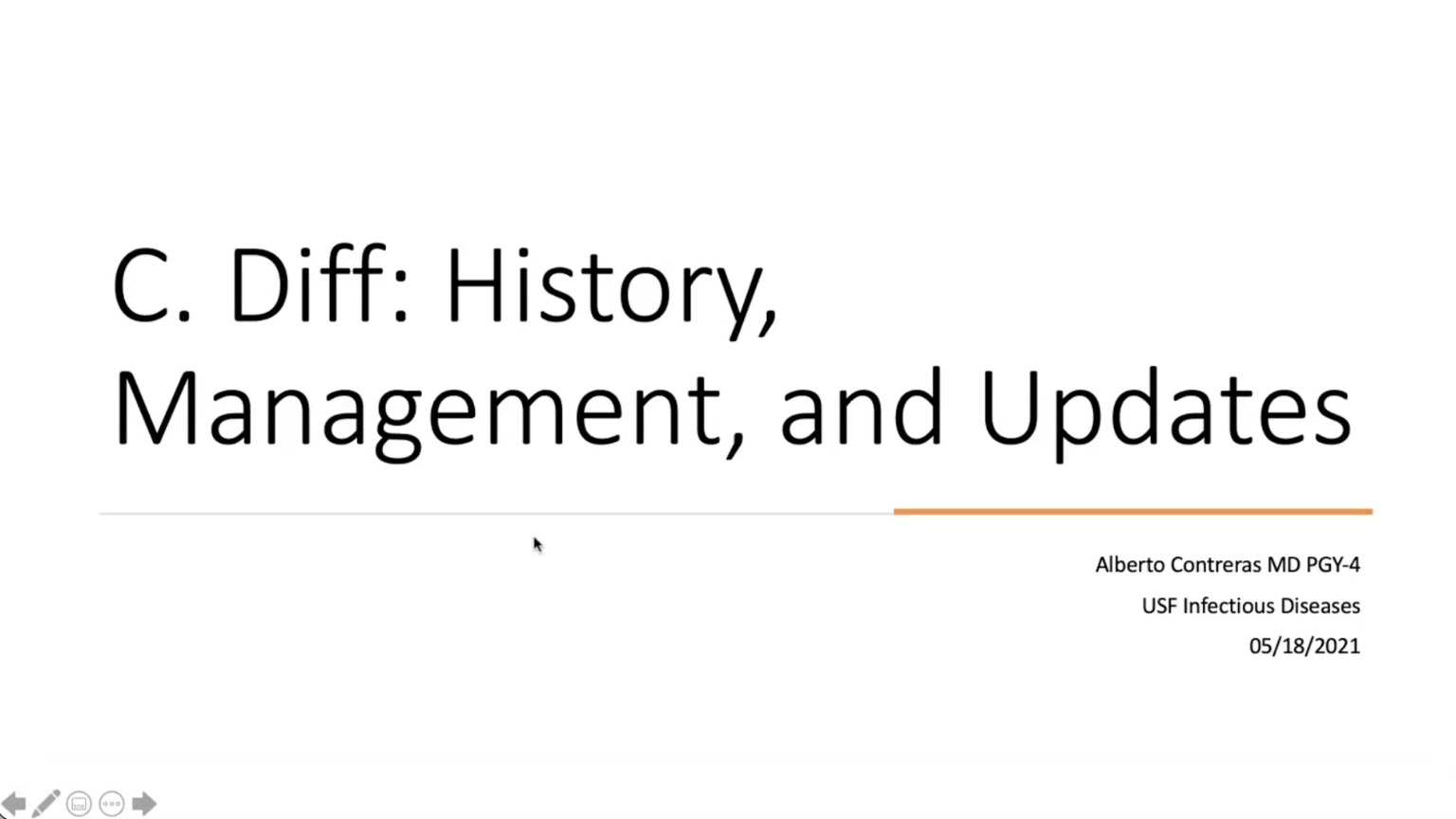Dr. Chambers, Professor of Medicine at the University of California, San Francisco, presents a state of the art lecture on current trends in the management of Staphylococcal bacteremia. Dr. Chambers begins by discussing risk factors leading to a poor outcome with Staphylococcus aureus bacteremia. He next discusses the role of Echocardiography (including 2D echo and TEE) in the diagnosis of endocarditis and when to use each modality in a given patient. Next, he contrasts the therapeutic management of both methicillin susceptible and methicillin resistant Staphylococcus aureus. Topics also discussed include the use of oral step down therapy in the treatment of endocarditis and bacteremia, the appropriate duration of treatment courses for bacteremia (both complicated and uncomplicated), and the use of combination antibiotic regimens for treating bacteremia infections.
Archives
Primer on the Primary Immunodeficiencies
Dr. Walter, Division Chief of the Department of Pediatric Allergy and Immunology at Johns Hopkins All Children’s Hospital, presents this basic review of Immunology. Dr. Walter begins by reviewing the basic classification of general immunodeficiency syndromes, and then covers the initial work-up for patients who are suspected as having an immune system deficiency. She then discusses signs and syndromes in specific patients that could suggest a primary immunodeficiency. Next, she discusses antibody deficiency syndromes and autoantibodies, She closes by discussing a specific immunodeficiency case with relevant details highlighted within the presentation.
Intro to OB/GYN Infections
Dr. Ju Hee Katzman, Assistant Professor of Infectious Diseases at the University of South Florida, presents an overview of the infectious diseases syndromes that can complicate the intrapartum or post-partum period. Dr. Katzman begins her presentation by discussing chorioamnionitis. She then reviews two post-partum syndromes, endometritis and refractory post-partum fever of undetermined origin. Next, Dr. Katzman discusses infections after perineal lacerations, including simple cases and more complicated ones involving deeper tissue involvement. Lastly, the treatment of UTIs in the peri-partum period is discussed, and Dr. Katzman closes by discussing post-abortal infections and the treatment of Group B Streptococcus agalactiae. Utilizing PollEverywhere, the material is presented in an interactive format.
Guide to Autos, Engraftment, and GVHD in Stem Cell Transplant Recipients
Dr. Olga Klinkova, Infectious Diseases Practitioner at Moffitt Cancer Center and Research Institute in Tampa, FL, reviews the basics of Stem Cell Transplantation (SCT) from an Infectious Diseases perspective. She begins by reviewing the indications for SCT, and then discusses the basic types of SCT based upon donor/recipient characteristics (matched related, matched unrelated, etc.) She then differentiated the timelines between autologous and allogeneic transplants. Next, she discusses Graft versus Host disease and its consequences to the SCT patient. Dr. Klinkova then closes by covering prophylaxis strategies for stem cell transplant recipients. From a lecture recorded in October 2021.
Infectious Diseases Issues Pre and Post Transplantation
Dr. Margarita Cancio, founder and Medical Director of the Infectious Diseases Associates of Tampa Bay, presents this talk on the infectious diseases management of transplant patients both before and after transplantation occurs. She begins by discussing the importance of a thorough pre-transplant evaluation, including a full history with regard to employment, travel, immunizations and other background history. She describes the laboratory evaluation of these patients, including specific screening studies. Next, infectious diseases history of the transplant donor is covered, as prior exposures to various infectious pathogens can affect the transplant recipient in many significant ways. Dr. Cancio then covers significant issues post transplantation, including the reactivation of certain infections such as the herpesviruses, hepatitis B and C, tuberculosis, and strongyloides infection. She then reviews the timing of certain infections after transplantation, with the highest risk period being directly after transplantation occurs. Lastly, infectious complications associated with specific immunosuppressove regimens and pre-transplant immunizations are reviewed.
Sexually Transmitted Diseases: Update for 2021
Dr John Toney, Professor of Medicine and the Morsani College of Medicine and Chief of Epidemiology at the James A Haley Veterans Hospital shares new recommendations in the management of STDs and STIs. He begins by discussing recent epidemiologic trends in STDs in the US, including the increasing trend in new reported cases over the last 5 years. he then focuses on causes of urethritis/cervicitis, including Gonorrhea and Chlamydia. The updated treatment recommendations for GC and Chlamydia are also discussed. Next, Dr. Toney discusses Syphilis. He explains the rationale behind Treponemal and Non-treponemal tests and how they are used to diagnose the stage of syphilis that is present. Treatment options for early and late syphilis are also explored. Lastly, Dr. Toney discusses Herpes genitalis and Trichomoniasis.
Introduction to Basic Immune System Function
Dr. Cannella, Assistant Professor at the University of South Florida Morsani College of Medicine, presents an introductory lecture on immune system function. He begins by discussing the first line body defenses such as the skin, mucous membranes, and lymphatic system. He then differentiates the innate versus the adaptive immune system. He then discusses other components of the immune system, including the complement pathway, antimicrobial peptides, PAMPS, DAMPS, phagocytosis, neutrophils, macrophages, dendritic cells, and NK (Natural Killer) cells. A second lecture is planned for later in the fall of 2021.
PO Versus IV Antibiotics for Osteomyelitis and Endocarditis: What’s the Evidence?
Dr. Sherbuk compares and contrasts the advantages and disadvantages of of intravenous versus oral antibiotic therapy regimens in the treatment of infections of bone and the heart in this new podcast. She begins by reviewing the history of osteomyelitis treatment, noting that IV therapy really predominated until the late 1980’s, then the first clinical studies of oral antibiotic therapy for osteo began. Dr. Sherbuk then focuses on the OVIVA trial. She concludes that although multiple RCTs demonstrate noninferiority, further research is needed on this treatment modality. The speaker next reviews PO Step-down therapy for endocarditis, including the POET trial. She concludes that PO step down therapy is an option for certain endocarditis patients, though several issues remain unclear including the length of the IV antibiotic lead-in, the preferred oral regimen, and the frequency of monitoring.
Malaria: Scourge, Mosquito-borne Malady, or just a Permanent Pandemic
Dr. Richard L. Oehler, Professor of Medicine at the University of South Florida Division of Infectious Diseases, presents a talk on the leading single infectious diseases killer of mankind. From its origins at the dawn of humanity throughout Greek, Roman, Middle Age, and contemporary history, Malaria has been a constant threat to civilization and continues to profoundly affect communities in the developing world. Dr. Oehler begins by discussing Malaria’s presence in modern literature, and the well known historical figures that have battled it. Next, he mentions how malaria has been in factor in US millitary history, from the Civil War to the great wars of the 20th century and even to the building of the Panama Canal. The epidemiology of malaria in the 21st century is then discussed, including the heavy burden of the world’s malaria cases currently occurring in Sub-Saharan Africa. The malaria life cycle is reviewed, and the specifics of transmission (including the role of the anopheles mosquito) are conveyed. Next, Dr. Oehler shares information on the clinical manifestations of Malaria, including the distinction between complicated and uncomplicated disease. Other topics mentioned in his lecture include Malaria host genetics, Malaria therapeutic recommendations, Malaria in travelers, Malaria prevention (including chemoprophylaxis), and vaccines.
Clostridium Difficile: History, Management, and Updates
Dr. Contreras, Infectious Diseases fellow at the University of South Florida, discusses a review of Clostridium difficile disease, a major healthcare-associated disorder. He begins by discussing the history of this potentially devastating disease. He then reviews basic epidemiology trends over the last several decades. Next, he reviews C. difficile risk factors. Following this, Dr. Contreras shares the latest recommendations from the recently published new C. difficile IDSA guidelines, including recent changes to the initial treatment of first outbreaks of the disease. Lastly, Dr. Contreras discusses management options for recurrent C difficile, including fecal transplantation, Bezlotoximab, and other potential future therapies.
